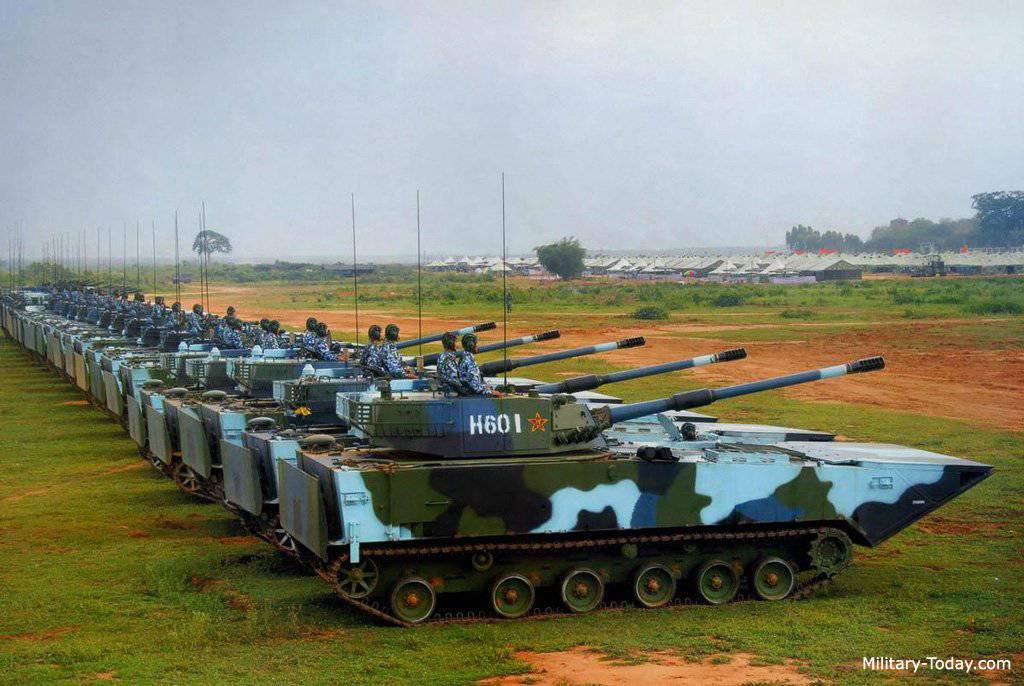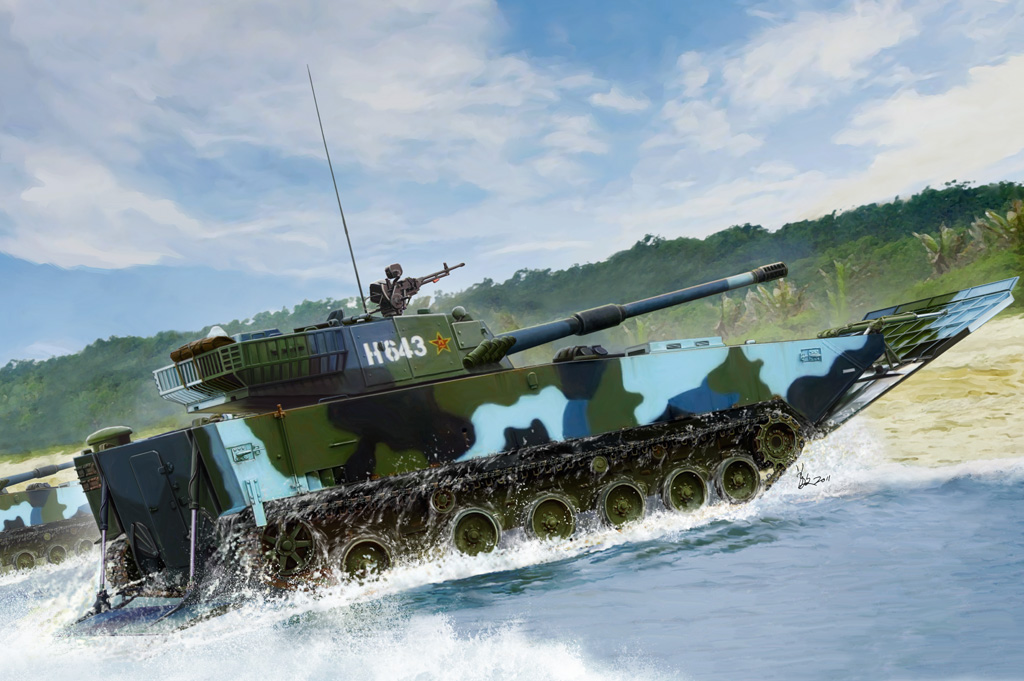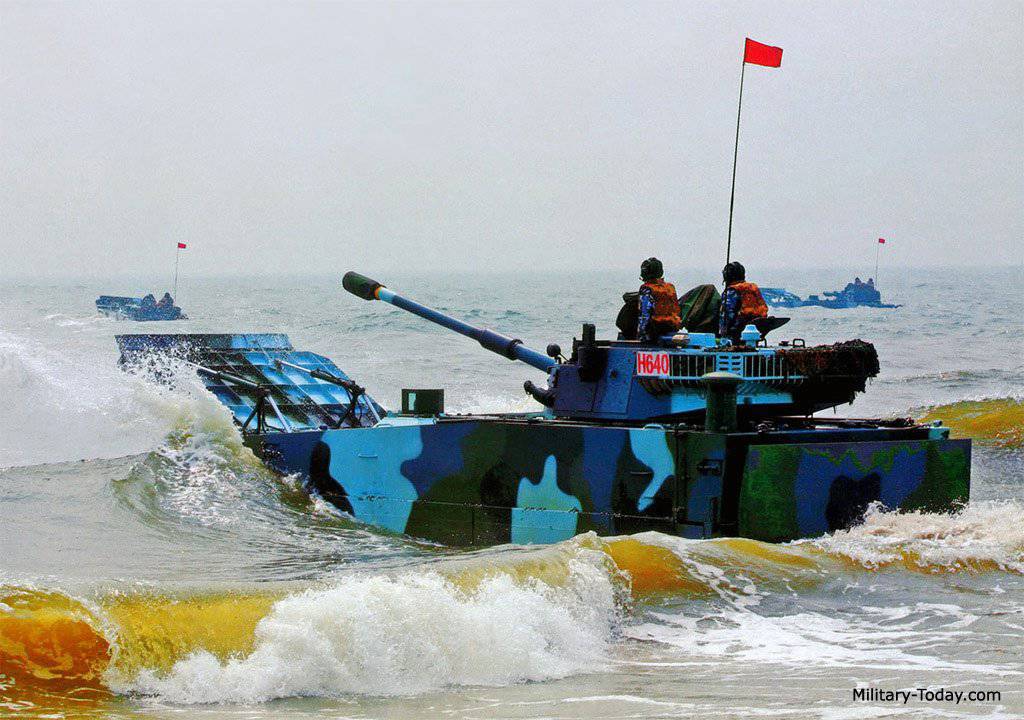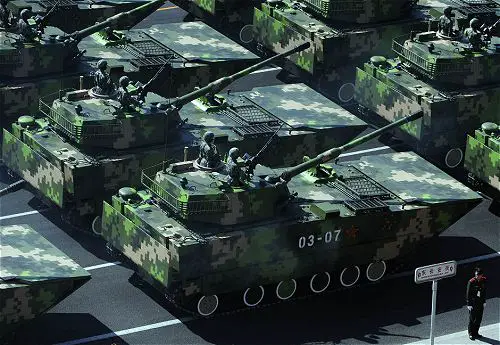
The ZBD2000 is an amphibious armoured fighting vehicle, developed for the PLA Marine Corps. The vehicle is a replacement to the Type 63A amphibious tank introduced in the late 1990s that is rapidly becoming obsolete. The vehicle could be launched at sea, from an amphibious assault ship over the horizon. It features a hydroplane, and a design concept that has been compared to the US cancelled Expeditionary Fighting Vehicle (EFV) programme.
The ZBD05 armored fighting vehicle was developed from this, as well as several other versions including a light tank, a command post vehicle, a recovery vehicle and others.
Production historyManufacturerNorinco
Produced 2006
Specifications
Weight 26 t
Width 2.74 m
Crew 3 (IFV), 4 (Light Tank)
Passengers 8
Main
armament
IFV 30mm ZPT-99 (2A72) cannon turret
105mm L7 rifled gun
Remote controlled weapon station featuring 12.7 mm MG with HJ-8missiles
Secondary
armament
12.7mm anti-aircraft machine gun, 7.62mm coaxial machine gunEngine diesel
550 hp (land), 1475 hp (water)Suspension torsion bar, retractable suspension units
Operational
range
500 kmSpeed 65 km/h on land
25km/h (VN18) and 45km/h (ZBD-05) on water

ZTD05 Light Tank
Chinese ZTD-05
The light tank variant is armed with a fully stabilised 105mm rifled gun. The 105mm rounds carried consist of armour piercing fin stabilised discarding sabot (APFSDS), high explosive (HE), and high-explosive anti-tank (HEAT) rounds, and Chinese 105mm laser beam riding guidance anti-tank guided missiles (ATGM). The 105mm missile offers the capability to engage shore targets whilst still swimming at sea, where conventional ammunition would perform poorly due to the motion of sea waves.
Secondary weapons include a 7.62mm coxial mounted machine gun, a 12.7mm anti-aircraft machine gun mounted on the roof of the turret near the loader, and 2 sets of 4-barrel smoke grenade launchers mounted on either side of the turret. The rear part of the turret has a storage rack for additional equipment which also provides additional protection against HEAT rounds.
Fire accuracy is attained by a computerised fire-control system (FCS), including a fire-control computer, light spot commander sight with laser rangefinder input, and light spot gunner sight with passive night vision. For all-weather amphibious assault operations, the vehicle is equipped with GPS navigation and thermal imaging system.
The light tank variant is operated by a crew of 4, with the driver positioned front-left of the turret, and loader, gunner, and commander occupying the turret.



